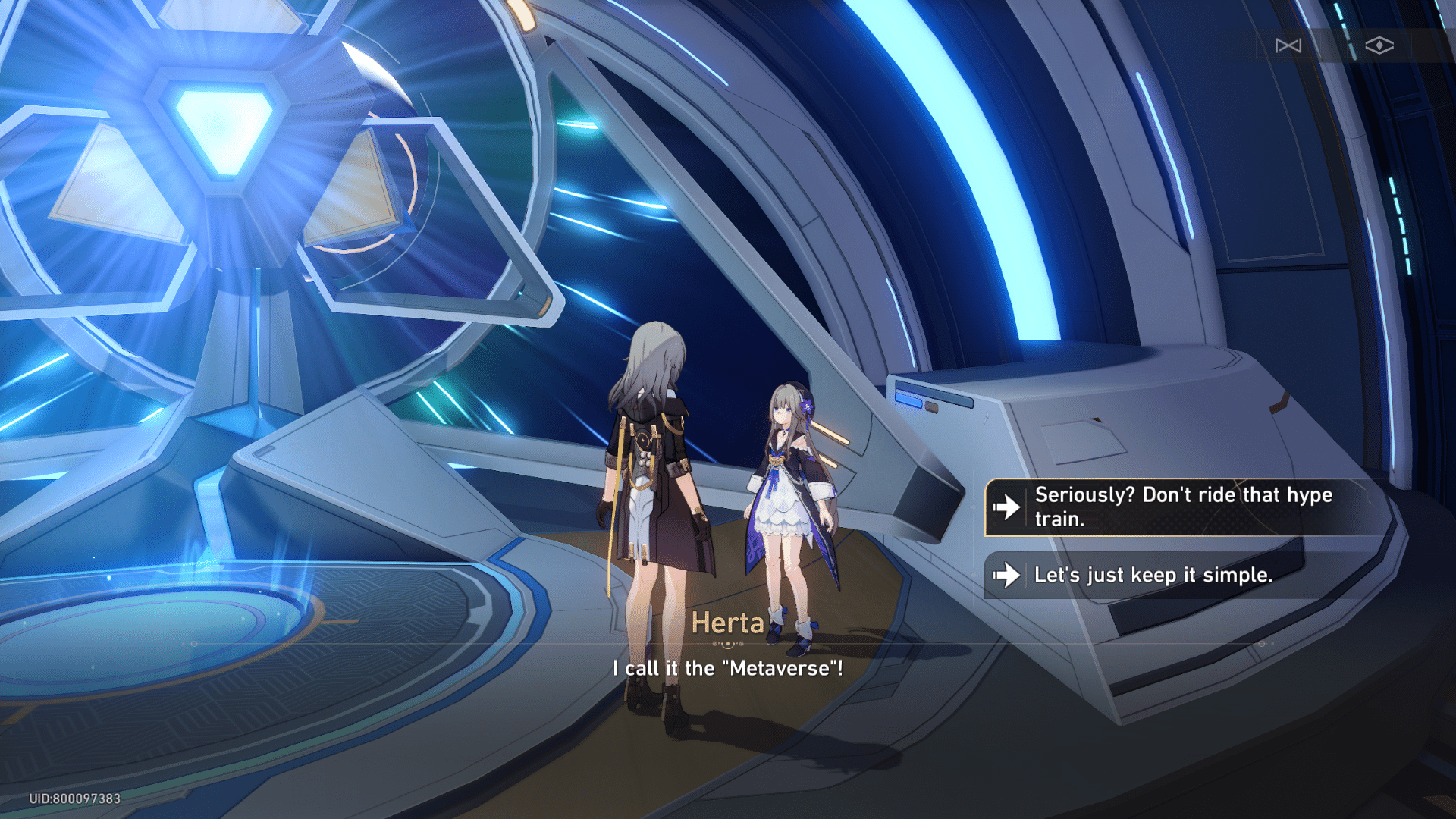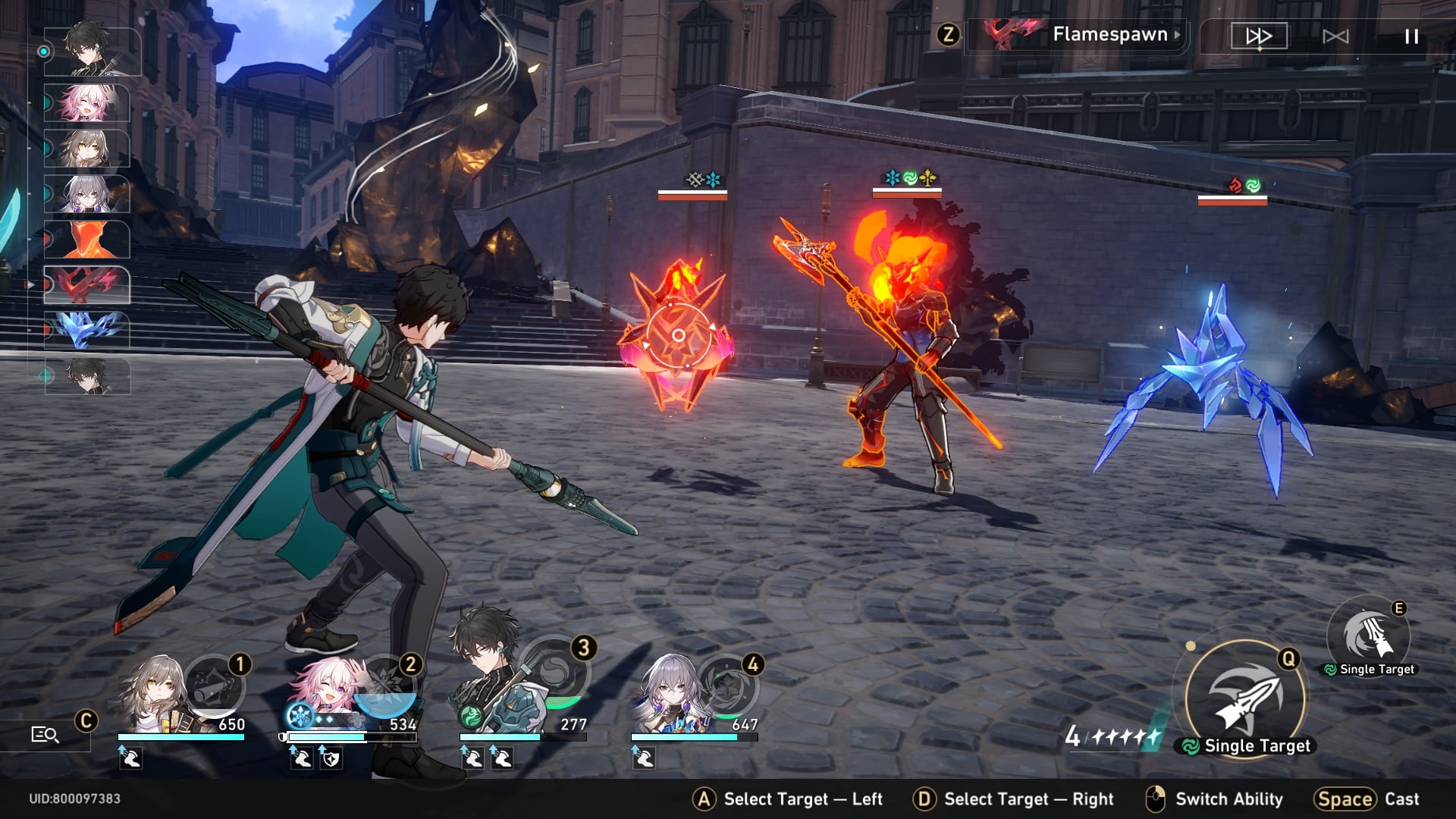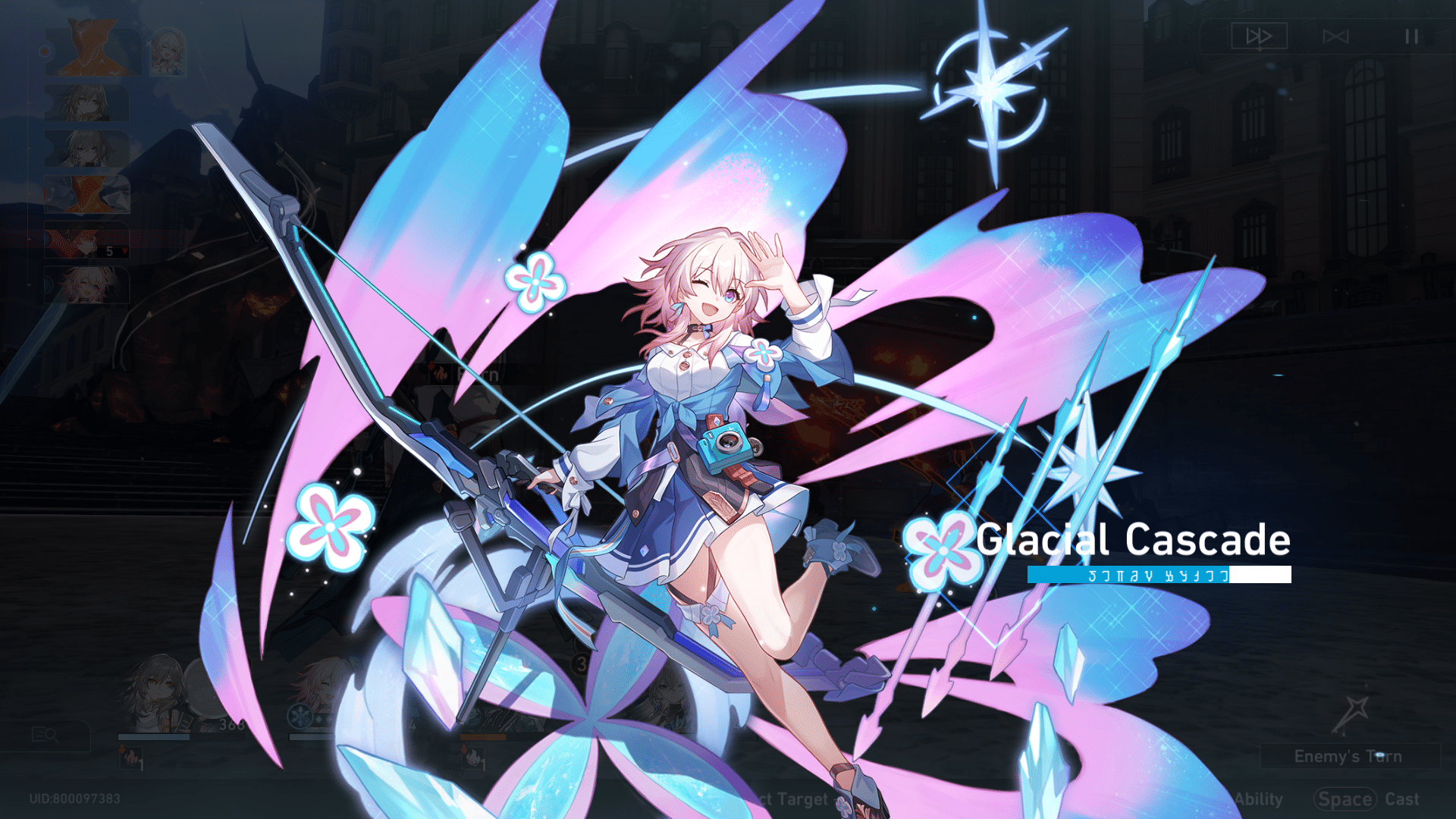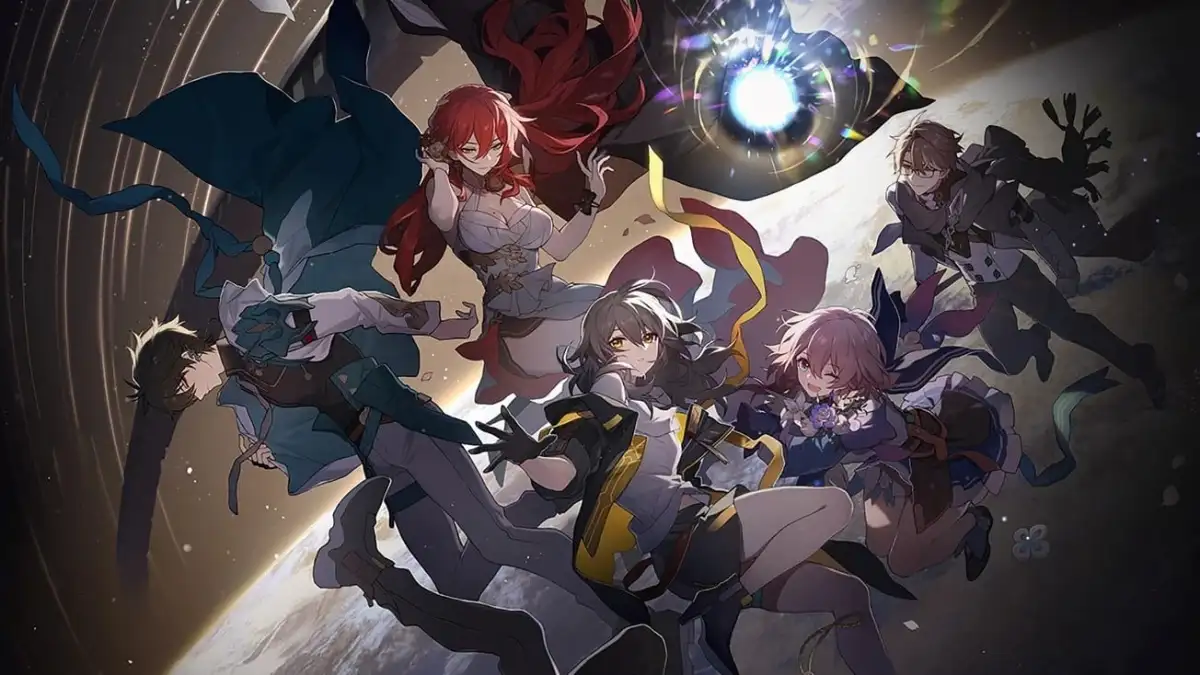With over 20 million downloads globally on the day of its release, hotly anticipated doesn’t even begin to describe Hoyoverse’s new gacha title, Honkai: Star Rail.
Its turn-based RPG format might seem like a step back when compared to popular predecessors, Genshin Impact and Honkai Impact 3rd, but even a quick dive into its engaging fighting mechanics, awe-inspiring animation, and strong writing reveals that the game holds a strong, future-forward approach befitting its sci-fi theme.
Hoyoverse’s Space Opera
In Honkai: Star Rail, you take on the role of Trailblazer, an artificial human created after being implanted with a Stellaron, an enigmatic power related to the Aeons (godlike beings in the Star Rail universe) that stands to bring about great destruction and tragedy. After being rescued by another group of trailblazers from an invasion by the Antimatter Legion, you join them on a space train named the Astral Express to journey the galaxy and find out more about Stellaron, to come closer to the truth of your origins.
Read: Meta and mathematicians: The world of Genshin Impact theorycrafting
While much of the story unfolds dramatic space opera themes, what’s endearing about Honkai: Star Rail is that the game clearly doesn’t take itself too seriously, at least in its English translation. The writing of Star Rail is lighthearted, peppered with jokes and pop culture references to things like Bloodborne, Final Fantasy, Fight Club. Even a jab at the buzzwordiness of ‘metaverse’ has a clever double entendre.

Cutscenes remain unskippable – which has been a large pain point for Genshin players. But Star Rail sees Hoyoverse greatly improve on its storytelling, what is being said, and the way it’s delivered, to great benefit.
Turn-based Excitement
The world of Honkai: Star Rail is made up of self-contained maps that require you to navigate through a series of zones, with plenty of ways to interact with the environment whether that’s breaking objects to obtain items, looting chests or battling monsters.
It isn’t a true open world, but still feels richly detailed. Each story arc seems set on taking you to a new planet or colony, and they’re dense enough to satisfy any itch for exploration – sometimes surprisingly so. In one entertaining example, ‘talking’ to enough trash cans in the Administrative District zone of Jarilo-VI earns you a trash can icon that you can use as your player avatar, an entertaining acknowledgement that most players will have a tendency to try to interact with everything.
The turn-based combat system of Honkai: Star Rail is reminiscent of classic Japanese RPGs, with its own twist. Enemies have both a health bar and a shield bar, and the latter must be broken through by exploiting elemental weaknesses, which allows characters to deal significantly more damage overall.
There’s an engaging element of strategy when it comes to pairing the right characters and their elements, to fight the right opponent. Adding another interesting layer of complexity are the ‘Paths’ of each character – similar to classes – which determine their role on the field.
For example, ‘The Destruction’, ‘The Hunt’ and ‘The Erudition’ are a team’s main DPS dealers, playing the role of tank, single-target offense and area-of-effect damage respectively. ‘The Preservation’ and ‘The Abundance’ are shield and healing-based characters while ‘The Harmony’ and ‘The Nihility’ buff the party and debuff enemies. Once you factor in each character’s unique play styles and skills, the sheer variety of ways you can build a team for battle is what keeps Star Rail so varied and exciting.

Having a team that covers a variety of elements and Paths is usually enough to get one through the mainline content. But for more difficult modes, such as the Forgotten Hall (a stage-clearing battle format similar to Genshin’s Spiral Abyss), building specific teams that cater to the enemy’s weak points is a key consideration.
At the time of writing, during the game’s launch window, everything in Honkai: Star Rail feels well balanced. This can largely be attributed to the eight free characters you obtain simply from playing the main quest. Unlike many other gacha games, these free characters are surprisingly great and worth building up. However, as is the nature of the genre, there is always a risk of ‘power creeping’ in future. Whether upcoming characters or items render this current roster obsolete remains to be seen.
The characters themselves are interesting, flaunting flashy designs that wouldn’t look out of place on a techwear runway. There’s Dan Heng, cool and composed with a bit of snark; March 7th, the bubbly Zillennial equipped with a camera for taking selfies along the way; and Himeko and Welt Yang, the wise but sarcastic ‘parents’ of the Astral Express.
You get an even stronger sense of their personalities in battle as every character’s Ultimate comes with some incredibly detailed animations. From Himeko’s tea-sipping and destructive ‘Heavenly Flare’ Ultimate, to Natasha’s healing skill that playfully launches a teddy bear piñata in the air, it’s clear that a lot of care has been taken to fill these dynamic scenes with character.
What About The Gacha?
Gacha games by nature are usually predatory, and developer Hoyoverse is certainly no stranger to this. That said, at the time of writing, Honkai: Star Rail seems to be the most subdued iteration of the Chinese company’s gambling-adjacent tactics geared toward getting more out of player’s pockets.
The free characters are abundant and great, which reduces the pressure to take chances in order to pull for five-star character banners. Star Rail’s beginner’s banner also has discounted pulls that can be redeemed with in-game content, with a guaranteed five star character by your 50th pull. As a veteran Genshin Impact player, it’s possible I may be more resilient to the allure of gacha – but it does feel like there is less of a compulsion to gamble for my 2D waifu or husband.
Read: What are games worth? Mobile game developers talk monetisation
Honkai: Star Rail feels like the sum of Hoyoverse’s tenure, in that regard. It has all the developer’s hallmarks of impressive voice acting, unique character designs and compelling gameplay loops, while also addressing many of the biggest criticisms concerning its previous games. There’s a reduction in the daily grind, less exploitative gacha mechanics, and the absence of a hyper-annoying sidekick.

With the knowledge of how Genshin Impact handles its ongoing content, there are some pitfalls that Star Rail might still run into – the ancillary gacha of farming for items to find one with the right stats and substats you’re looking for will likely rear its punishing head, once the game and the players hit more advanced strides.
But as this genre of mobile game becomes more refined, perhaps a more relaxed version of these games will become something the playerbase can accept as well.
Honkai: Star Rail is just that – a beautiful and highly appealing game to be played while waiting in line or while commuting. And there’s certainly something romantic about escaping your own boring train ride in exchange for the Astral Express, voyaging through the stars, planets and the great unknown.
Four stars: ★★★★
Honkai: Star Rail
Platforms: iOS, Android, PC
Developer: Hoyoverse
Publisher: Hoyoverse
Release Date: 26 April 2023
This review was originally published 11 May 2023.





